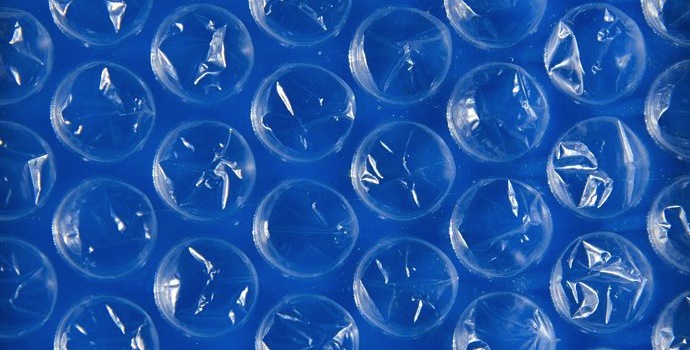
A team of scientists at Harvard University’s Department of Chemistry and Chemical Biology are looking at bubble wrap to pop a hole in traditional lab analysis requirements.
Bubble wrap is made from the resin form of a thermoplastic polymer called polyethylene and was originally intended as a new type of wallpaper. Its current and better known use is protecting our valuables from damage (and when that’s done, of course, driving people crazy in a frenzy of pop-pop-popping!)
Tiny Test Tubes
Now, researchers have found there may be a more important and productive use for this bubbly, plastic, de-stressing marvel. They proposed the use of bubble wrap as a sheet of tiny test tubes. According to their reports, tests can be done right inside the bubbles! The material needs to be handled gingerly when the bubbles are filled and ready for analysis. However, the idea has incredible potential when it comes to regions with limited or no resources to execute such analyses.
The material is cheap and available virtually everywhere. It’s flexible and doesn’t break like glass test tubes. The sterile bubbles were filled with liquids, for storage or analysis, by injecting them with a needle or pipette tip. The holes were sealed using a nail hardener. Bubble wrap is easily disposed of by burning, and since the bubbles are sterile inside, there is no need for an autoclave (or the electricity it takes to run one). This is an incredible advantage to the almost 2 billion people who don’t have access to electricity on a regular basis.
They are clear in the visible range like cuvettes, and can be used for absorbance and fluorescence measurements. They are gas-permeable, which allows them to be used for the storage and growth of microorganisms. Finally, carbon electrodes can be added so the bubbles can be used as electrochemical cells.
Applications
Glucose and hemoglobin were tested using a spectrophotometer, and ferrocyanide (a salt) was examined electrochemically. Using the bubble wrap, the scientists were able to culture E. coli — a very important factor in detecting contamination in water samples. They also were able to grow the microorganism C. elegans, a nonparasitic roundworm.
The ability to use something so commonly available and inexpensive for testing in developing areas is a wonderful contribution to science. For instance, carrying only lightweight materials, a soldier could test water for potability for his battalion in the middle of nowhere with limited resources.
Thought for the day: The next time you fly, you might want to be sure to pack some handy-dandy bubble wrap in your carry-on, just in case. Who knows? You may need it to bring a fragile souvenir back from your vacation. Or in a worst-case scenario, you’ll end up like the people on Lost, but at least you’ll have a leg up in the lab analysis department. That is, unless the passenger next to you finds it first and pops all your precious test tubes. In the off chance you end up like Tom Hanks in Castaway, you may want to bring along a Wilson volleyball too.
Image by maropictures/123RF.
“Adaptive Use of Bubble Wrap for Storing Liquid Samples and Performing Anaytical Assays, Analytical Chemistry,” by David K. Bwambok, et al., Science, July 21, 2014, DOI: 10.1021/ac501206m.
“Bubble Wrap Serves as Sheet of Tiny Test Tubes in Resource-Limited Regions,” Phys.org, July 16, 2014.
“Bubble Wrap Can Make Great DIY Test Tubes,” by Rachel Nuwer, Smithsonianmag.com, July 18, 2014.
